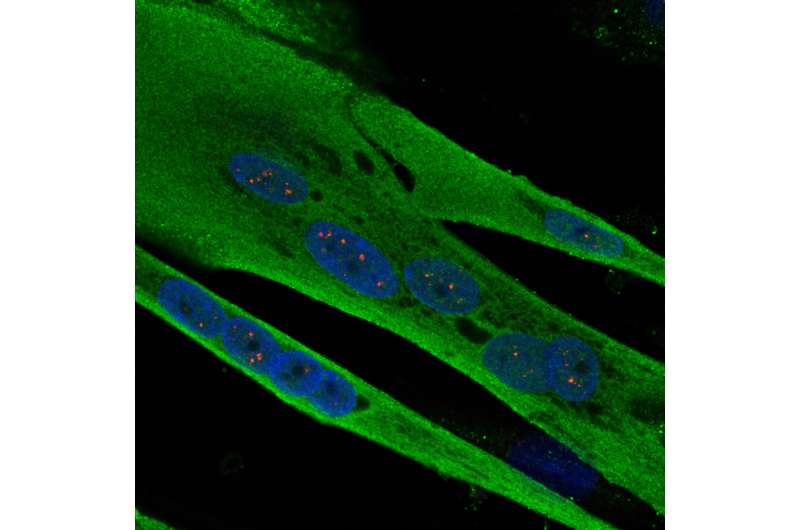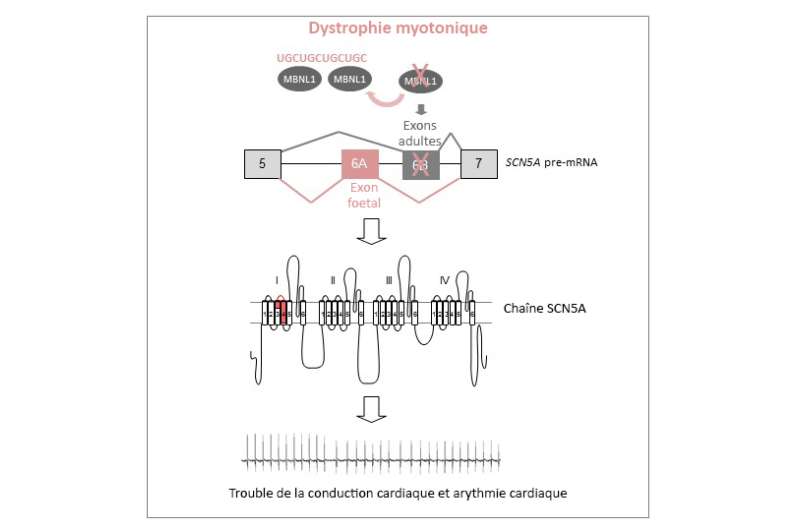The origin of heart dysfunctions in myotonic dystrophy identified

An international team, including researchers in France at Inserm, CNRS and the University of Strasbourg, brought together at IGBMC is lifting the veil on the molecular mechanisms causing heart dysfunctions in myotonic dystrophy, a genetic disease affecting one person in 8,000. This new study, published this week in Nature Communications, could contribute to discovering a treatment.
Myotonic dystrophy, also known as Steinert disease, is the commonest adult form of muscular dystrophy. Patients affected by this genetic condition suffer from wasting of skeletal muscles as well as arrhythmia and other cardiac dysfunctions. This is a particularly debilitating disease, for which there is currently no treatment.
Myotonic dystrophy is due to a mutation leading to the expression of RNA containing long repetitive sequences of the CUG trinucleotide. These mutated RNAs accumulate and alter regulation of alternative splicing of numerous genes. Despite the significance of work already done on this disease, many points remain to be elucidated. This is true for the origin of arrhythmia and other cardiac dysfunctions, which represent the second most common cause of death in this disease.
In this new study, researchers have identified new splicing alterations in messenger RNA from heart samples of affected patients. Among these many alterations, biologists have established that those relating to the cardiac sodium channel (SCN5A) were fundamental to understanding the cardiac dysfunctions of these patients.
Scientists there clarified the molecular mechanisms leading to the alteration of SCN5A in these patients. Collaboration with Denis Furling's team at the Institut de Myologie in Paris has enabled these cardiac alterations to be reproduced in a mouse model.

"The next step would be to see if, by restoring correct splicing of SCN5A, we can also successfully restore normal heart function", explains Nicolas Charlet-Berguerand, Inserm Research Director, who coordinated this work. The researchers are hoping that this breakthrough will give a fresh boost to research into this rare disease.
More information: Fernande Freyermuth et al, Splicing misregulation of SCN5A contributes to cardiac-conduction delay and heart arrhythmia in myotonic dystrophy, Nature Communications (2016). DOI: 10.1038/ncomms11067















